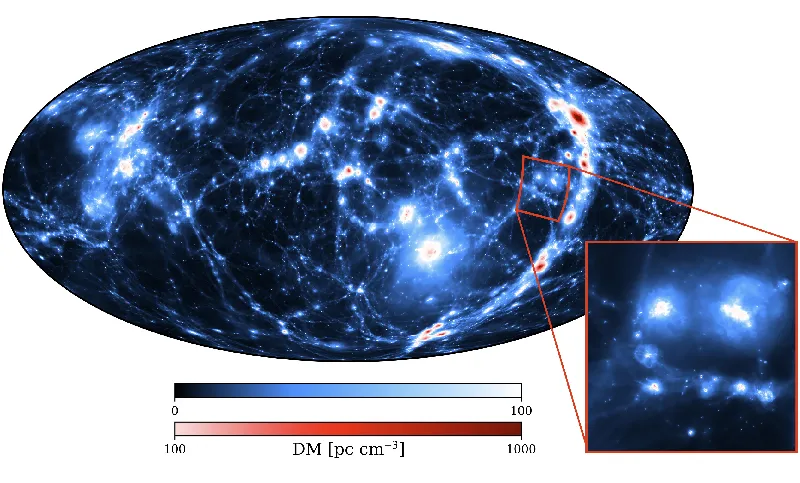Discovering Cosmic Mysteries: How Ray-Tracing Fast Radio Bursts Unlocks the Universe's Electron Web

In an exciting new study by Ralf M. Konietzka and colleagues, researchers have employed advanced ray-tracing techniques within the IllustrisTNG cosmological simulation to shed light on the nature of Fast Radio Bursts (FRBs) and their dispersion measures (DMs) from redshift 0 to 5.5. With the ability to accurately trace FRBs through the cosmic web and analyze the data, this research addresses fundamental questions about the distribution of matter in the universe.
Understanding Fast Radio Bursts
Fast Radio Bursts are intense pulses of radio waves that last only a few milliseconds but are believed to be connected to high-energy astrophysical phenomena. One of their notable features is their dispersion; the higher the frequency, the quicker the pulse travels, creating a delay that can be measured as the DM. Understanding the DM helps scientists probe the universe's intergalactic medium and assess the distribution of free electrons in it.
Innovative Ray-Tracing Methodology
Konietzka and his team have developed a ray-tracing method that tracks the path of FRBs through the simulation environment, reconstructing all segments crossed along the way. This improved technique helps solve a significant issue in previous studies, where misestimations could vary by as much as 50% due to insufficient data sampling along the ray paths. Their method led to the creation of over 20 publicly available DM catalogs, which now serve as invaluable resources for the astrophysical community.
Dispersion Measure Distribution Analysis
One of the major findings is that a modified distribution model with a power-law drop is more accurate for representing the DM values observed at different redshifts, compared to previously suggested models such as the log-normal distribution. This discovery emphasizes the importance of refining data analysis methods to achieve better agreement with observational data from telescopes like CHIME and ASKAP.
Insights into Cosmic Structure
This research unveils significant insights into the cosmic web's influence on FRB signals. By tracing the rays through varying structures like cosmic filaments, halos, and voids, the study illustrates how these elements shape the DM distribution. Moreover, it indicates that the size of the simulation box and the resolution can significantly affect DM distributions, underlining the critical nature of careful simulation design.
A Step Towards Future Research
The implications of this work are profound. It not only enhances our understanding of FRBs and their connection to large-scale structures but also lays the groundwork for future studies on the distribution of cosmic baryons. The publicly available catalogs from this research will facilitate deeper investigations into the universe's makeup and possibly guide the search for further cosmic phenomena.
Overall, Konietzka et al.'s study represents a significant advancement in the quest to comprehend our universe, demonstrating that through innovative simulations and methodologies, astronomers can unlock secrets long hidden within the folds of cosmic history.